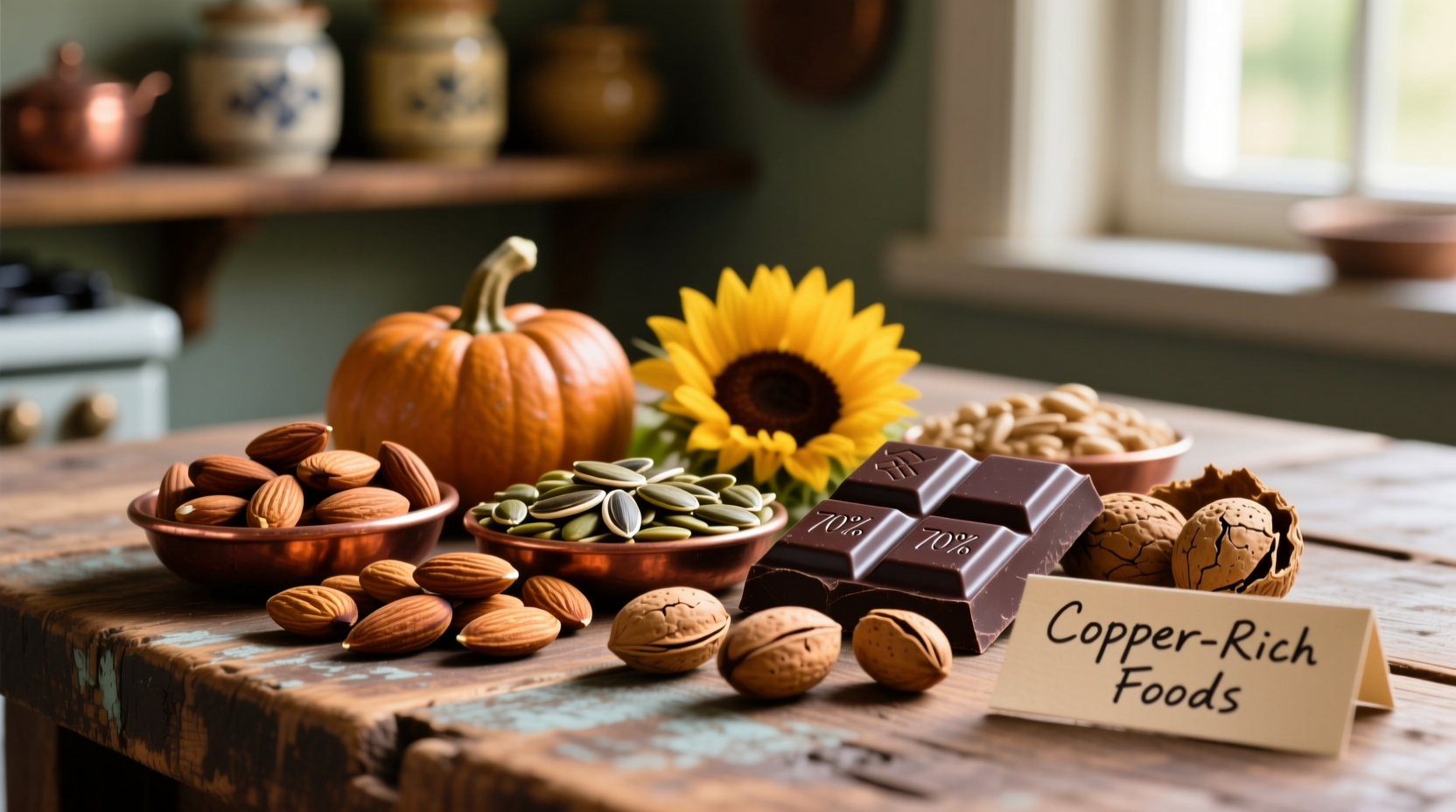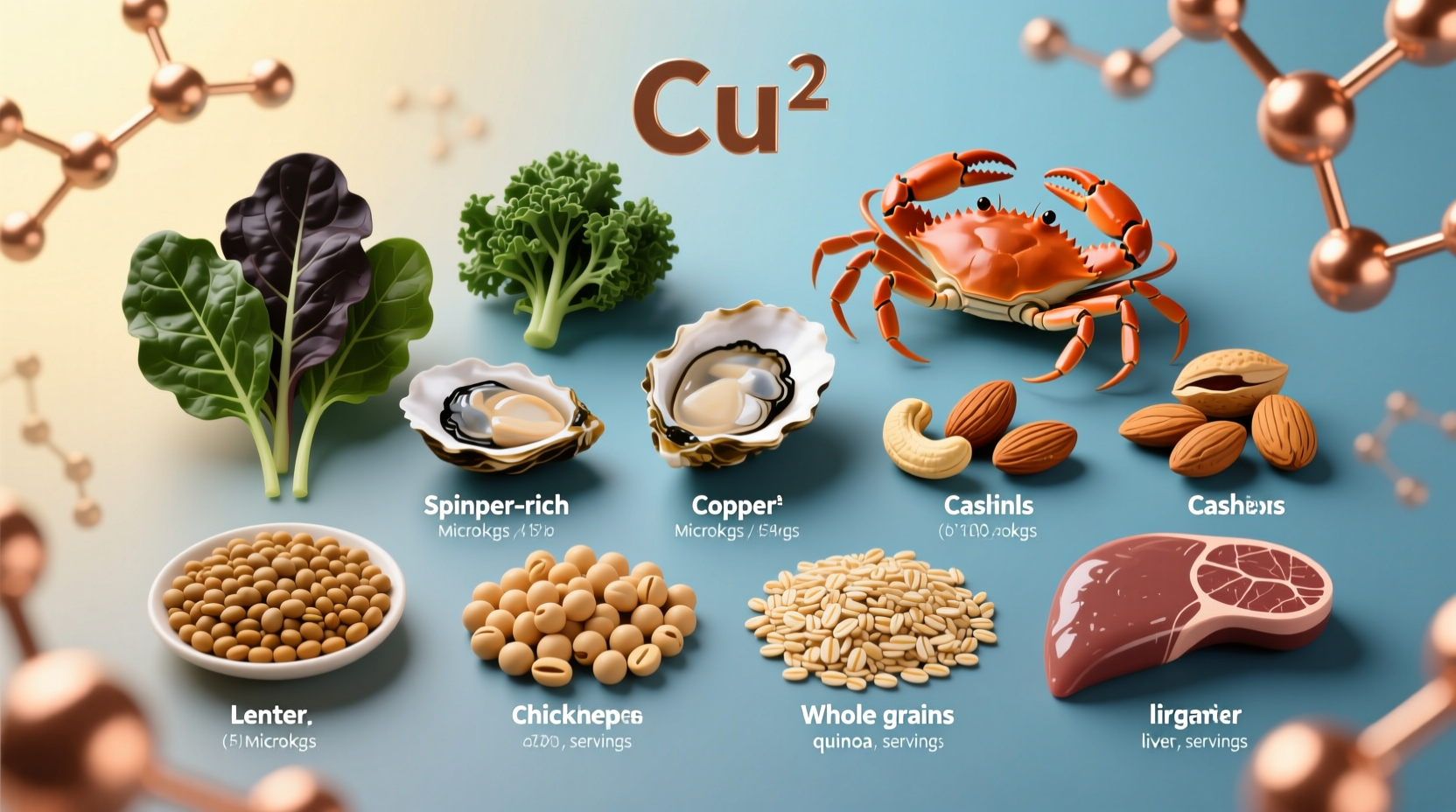Discover exactly which foods contain copper, how much you need daily, and practical ways to incorporate these nutrient-dense options into your meals. This guide provides science-backed information to help you optimize your copper intake through food sources alone.
Why Copper Matters for Your Health
Copper is an essential trace mineral that plays a critical role in numerous bodily functions. According to the National Institutes of Health, copper helps with iron metabolism, connective tissue formation, neurological function, and acts as an antioxidant. Most adults need approximately 900 micrograms of copper daily to maintain optimal health.
Signs of copper deficiency can include fatigue, weakened immune function, pale skin, and problems with coordination. While severe deficiency is rare in healthy individuals eating a balanced diet, marginal deficiency may occur in people with certain medical conditions or restrictive diets.
Top Copper-Rich Foods by Category
Understanding which foods contain copper helps you make informed dietary choices. The USDA FoodData Central provides comprehensive nutrient analysis of thousands of foods. Below are the best dietary sources of copper, organized by food category:
| Food Category | Top Copper Sources | Copper per Serving | % Daily Value |
|---|---|---|---|
| Organ Meats | Beef liver (3 oz) | 14,000 mcg | 1,556% |
| Shellfish | Oysters (6 medium) | 7,600 mcg | 844% |
| Nuts | Cashews (1 oz) | 629 mcg | 70% |
| Seeds | Sesame seeds (1 tbsp) | 533 mcg | 59% |
| Legumes | Lentils (1 cup cooked) | 557 mcg | 62% |
| Dark Chocolate | Dark chocolate 70-85% (1 oz) | 507 mcg | 56% |
These values come from the USDA's official nutrient database, which analyzes foods using standardized laboratory testing methods. The percentage of daily value is based on the Recommended Dietary Allowance (RDA) of 900 mcg for adults.
How to Maximize Copper Absorption from Food
Simply eating copper-rich foods isn't enough—you need to optimize absorption. Your body absorbs copper more effectively when consumed with certain other nutrients. Pair copper-containing foods with vitamin C-rich options like citrus fruits or bell peppers to enhance absorption.
Be mindful that excessive zinc intake can interfere with copper absorption. The NIH notes that consuming more than 50 mg of zinc daily may reduce copper absorption. If you take zinc supplements, space them several hours apart from copper-rich meals.
Here's a practical tip: Create a copper-boosting trail mix with cashews, sunflower seeds, and dried apricots. The vitamin C in the apricots helps your body utilize the copper from the nuts and seeds more effectively.

Special Considerations for Different Dietary Needs
Copper requirements vary across different life stages and dietary patterns. According to the NIH Office of Dietary Supplements, pregnant women need 1,000 mcg daily, while breastfeeding women require 1,300 mcg.
Vegans and vegetarians should pay particular attention to copper intake since plant-based sources generally have lower bioavailability than animal sources. However, by strategically combining copper-rich plant foods like legumes, nuts, and whole grains, you can easily meet your daily needs.
People with celiac disease or Crohn's disease may have difficulty absorbing copper and should consult with a healthcare provider about monitoring their copper status. The Linus Pauling Institute notes that gastrointestinal disorders can significantly impact copper absorption.
Creating Copper-Rich Meals You'll Enjoy
Boosting your copper intake doesn't have to be complicated. Try these simple meal ideas that naturally incorporate copper-rich ingredients:
- Breakfast: Oatmeal topped with sunflower seeds, chopped almonds, and sliced banana
- Lunch: Lentil soup with a side of whole grain bread and a small portion of dark chocolate
- Dinner: Salmon with a sesame seed crust, served with black beans and quinoa
For a quick snack, enjoy a small handful of cashews with an orange. The vitamin C in the orange enhances copper absorption from the nuts. Remember that copper content can vary based on soil conditions where plants are grown and farming practices, so variety is key to ensuring consistent intake.
When Food Sources Might Not Be Enough
While most people can meet their copper needs through diet alone, certain medical conditions may require supplementation. The NIH indicates that copper deficiency is rare in healthy individuals but can occur in people with genetic disorders like Menkes disease.
If you're considering copper supplements, consult with a healthcare provider first. Excessive copper intake can cause nausea, vomiting, and in severe cases, liver damage. The tolerable upper intake level for adults is 10,000 mcg (10 mg) daily from all sources.
Practical Tips for Tracking Your Copper Intake
Monitoring your copper consumption is easier than you might think. Start by incorporating at least two copper-rich foods into each day's meals. Use a food tracking app that includes copper in its nutrient database to get a rough estimate of your daily intake.
Focus on whole food sources rather than supplements whenever possible. The natural balance of nutrients in copper-rich foods provides additional health benefits beyond just the copper content. For example, nuts and seeds provide healthy fats and fiber along with copper.











 浙公网安备
33010002000092号
浙公网安备
33010002000092号 浙B2-20120091-4
浙B2-20120091-4